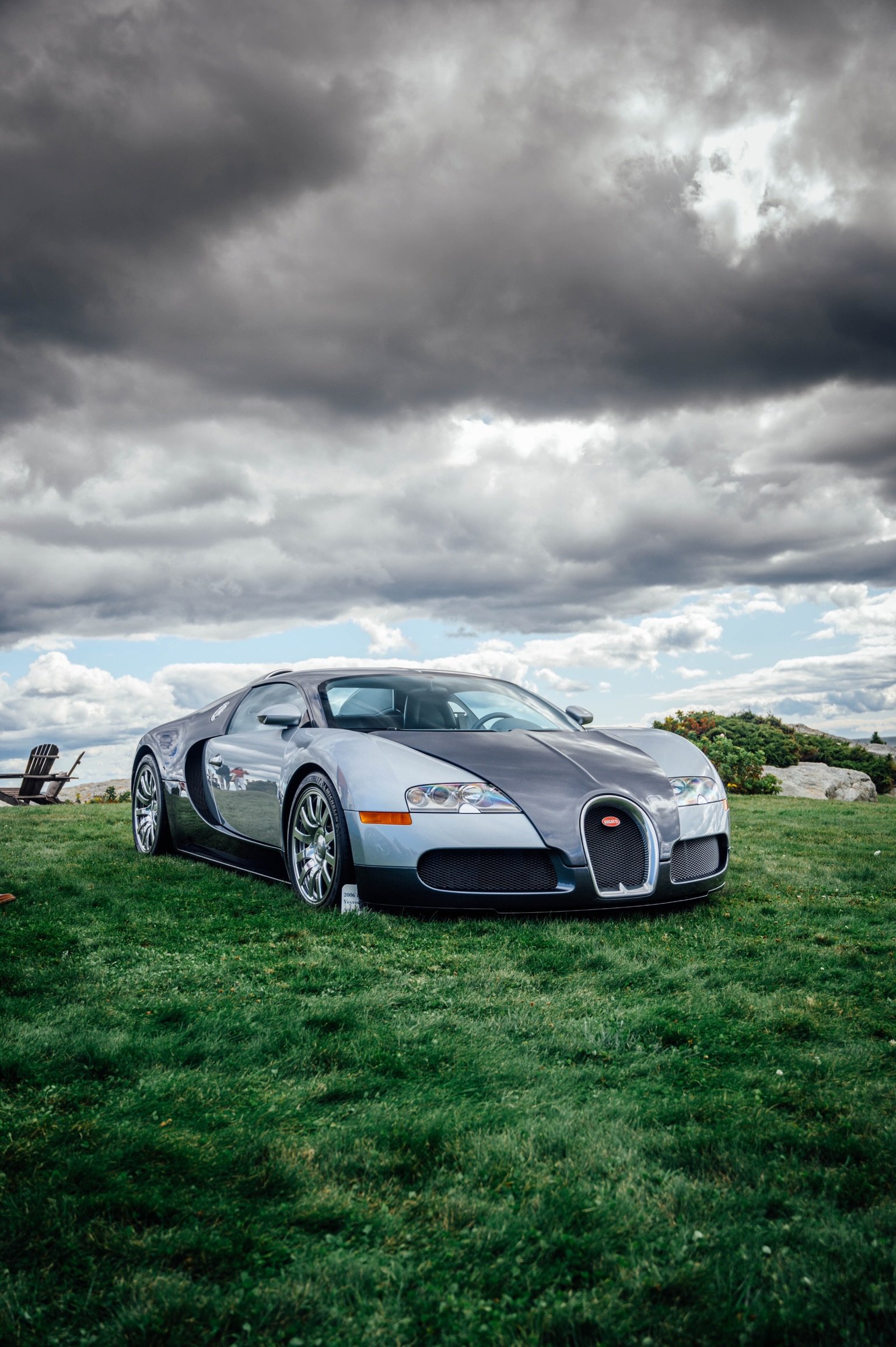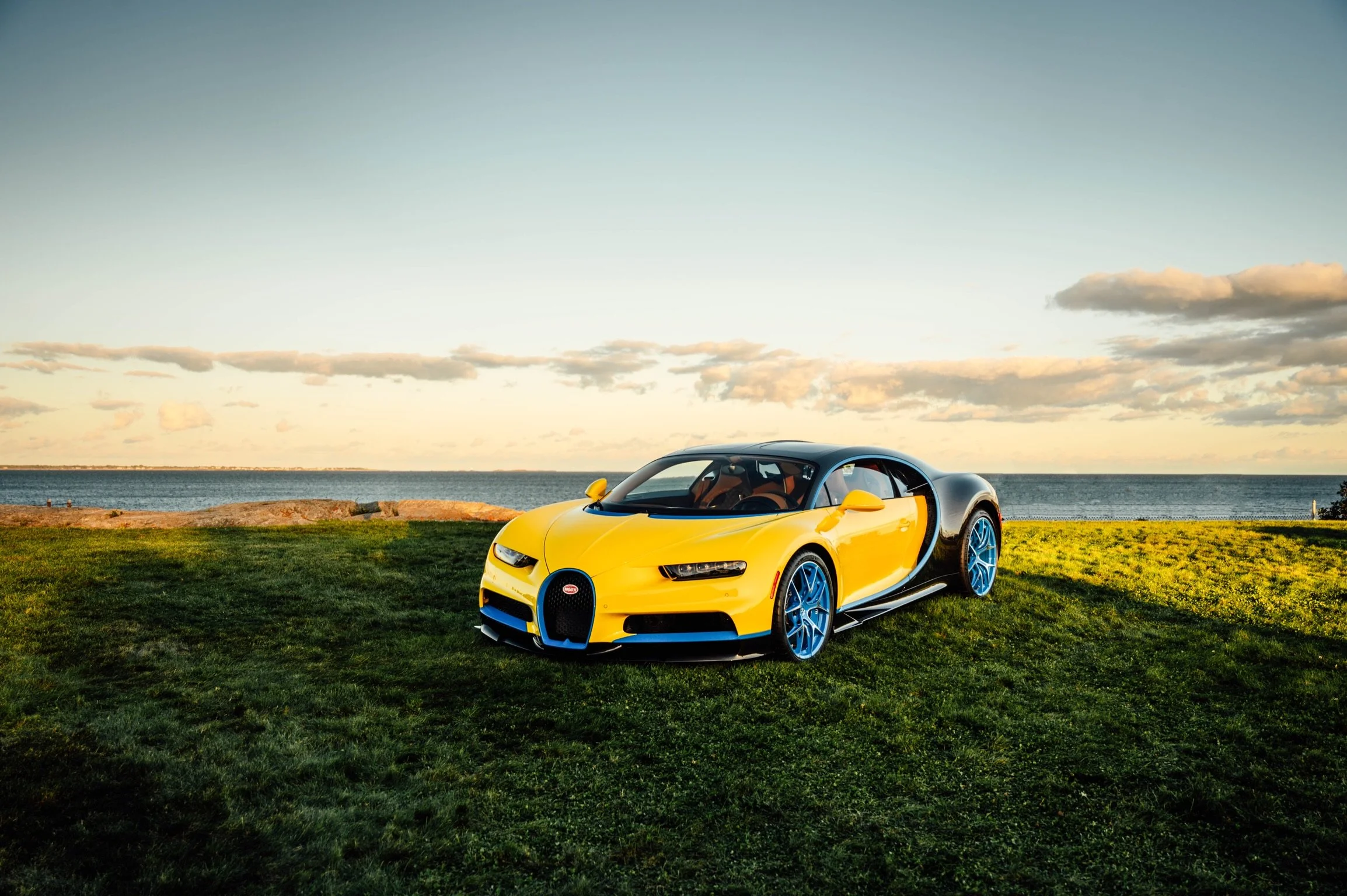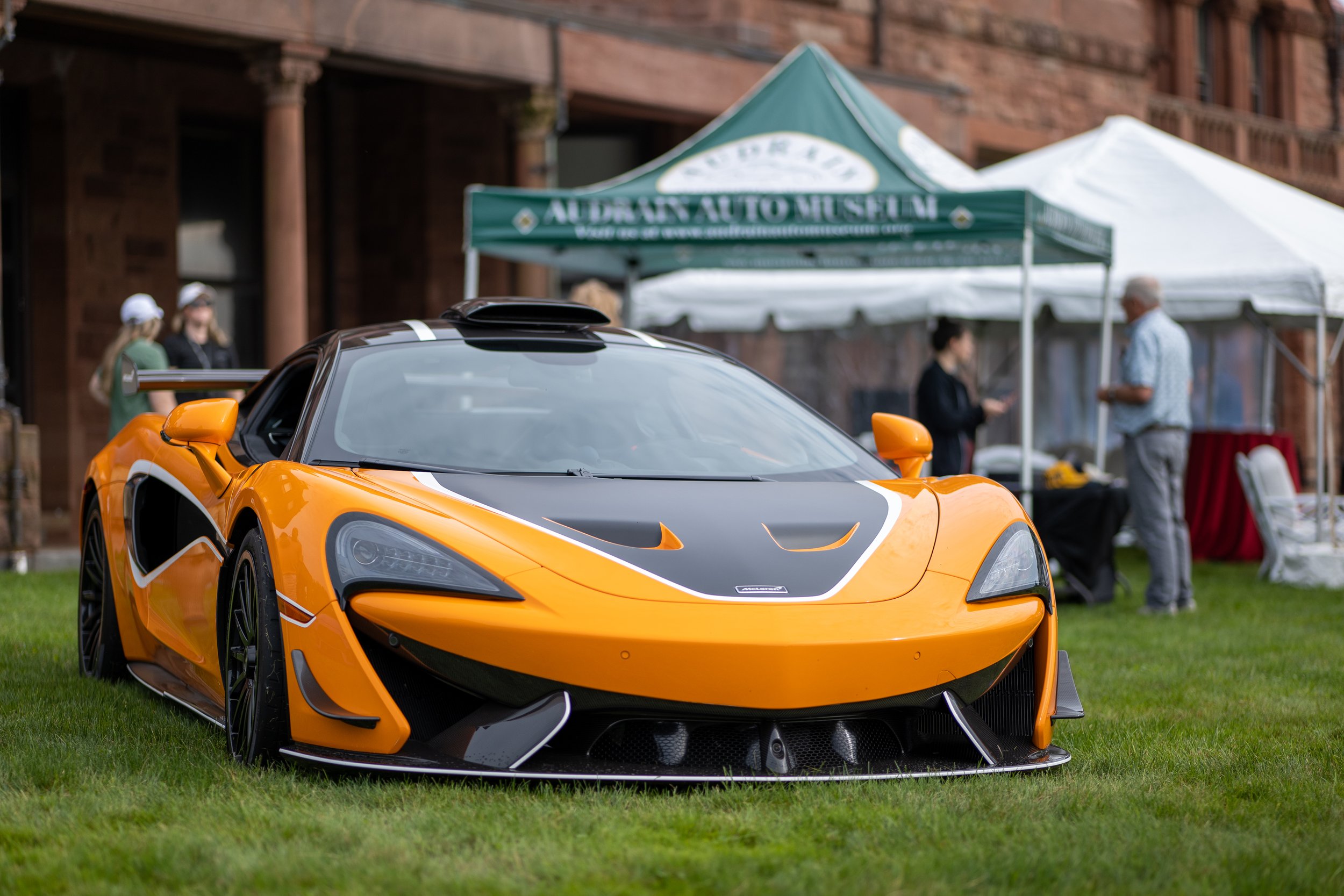1995 McLaren F1
The F1 was the fasted production car in the world at 240.1 mph, a record it held for a decade! With superb aerodynamics and ground effects contributing to incredible handling and driving performance, no wonder some consider it the best road car ever made. Is it Super?
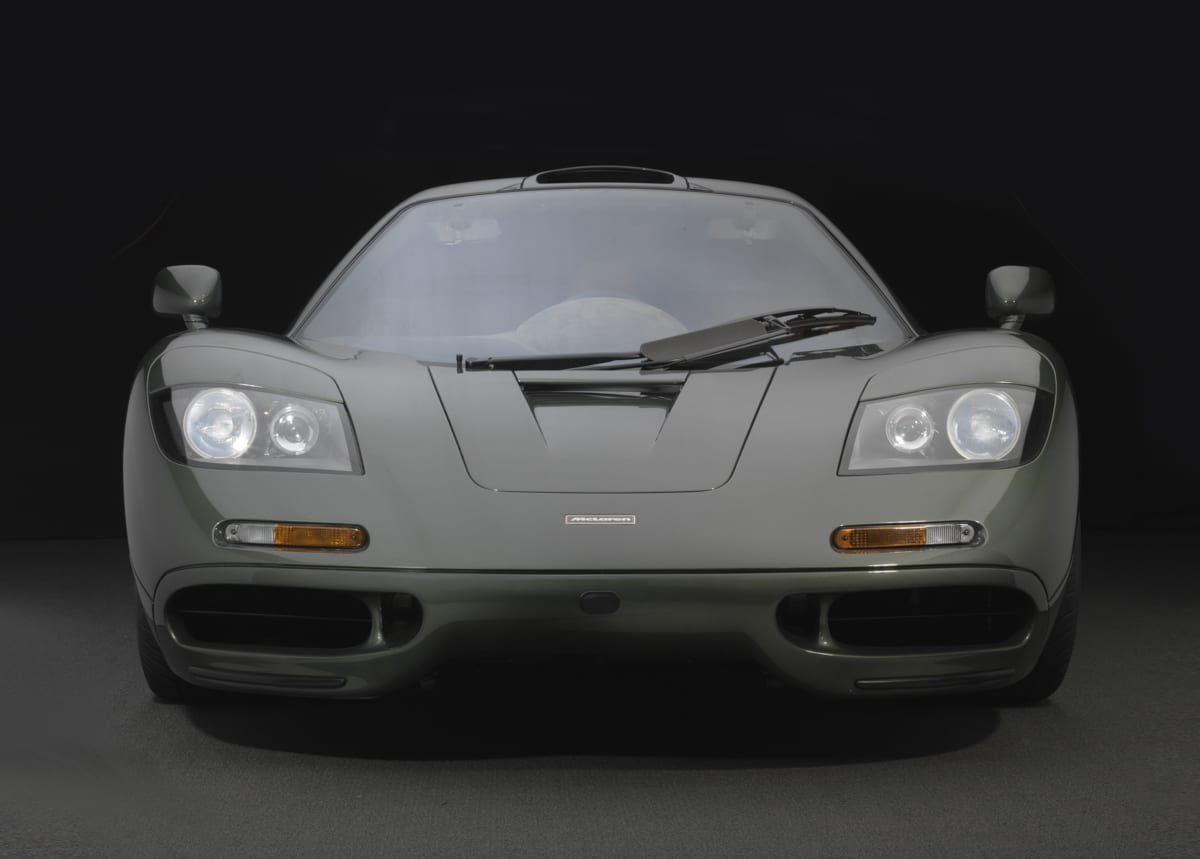

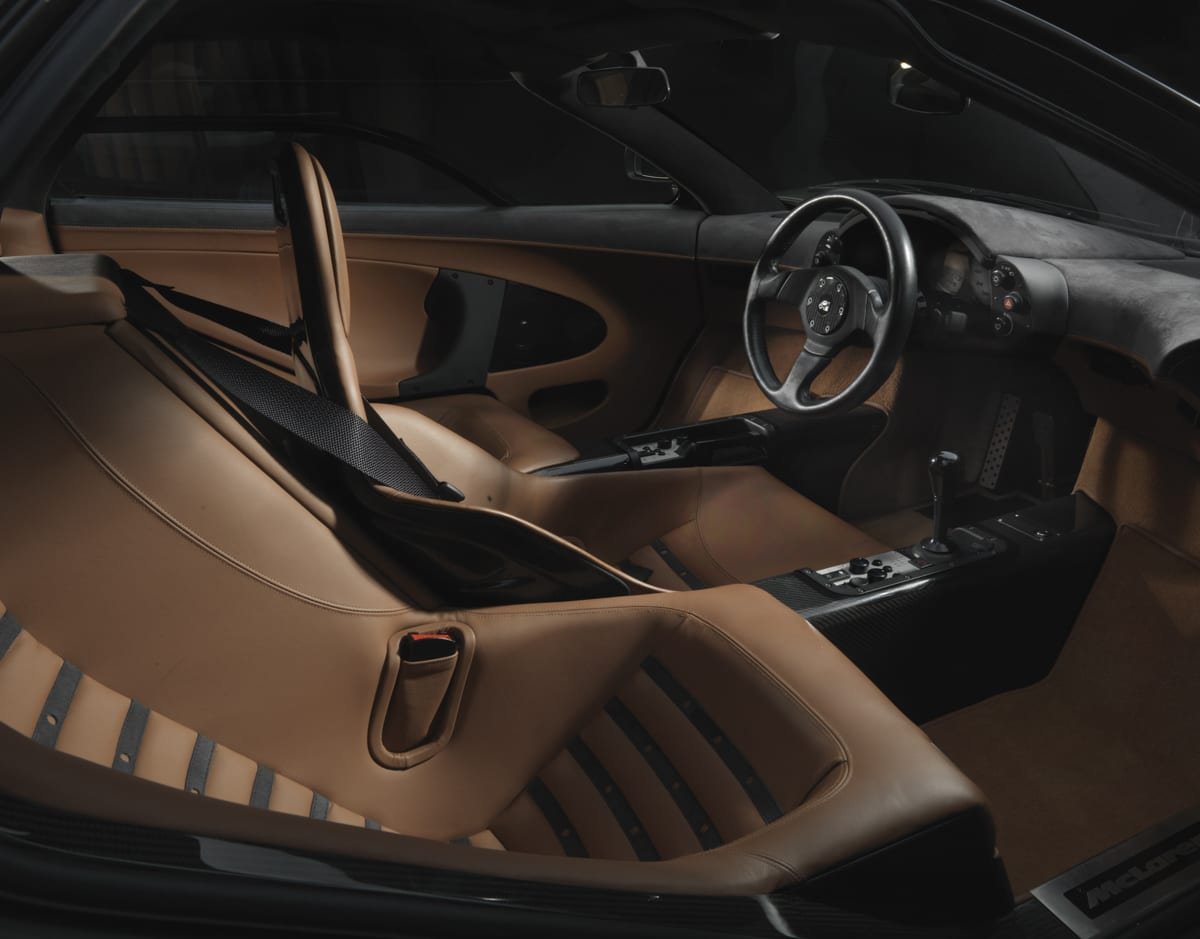
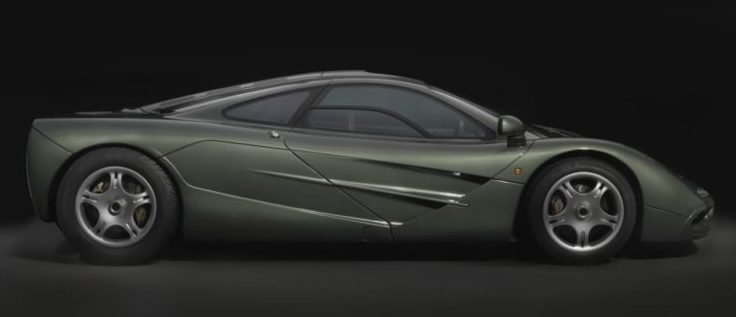
Generously Lent by the Miles Collier Collection @ Revs Institute, Naples, FL
Photos by Peter Harholdt
The McLaren F1 was the ultimate street car of the Twentieth Century. That was the consensus of the motoring press, and certainly McLaren’s intent. Who better to unseat Ferrari, Lamborghini, Bugatti, and Jaguar than the factory that had accumulated five consecutive Group 7 (Can Am) world championships, three Indy 500 victories and six Formula 1 titles?
Put to the task of creating McLaren’s ultimate street car was Gordon Murray, who became famous designing the Brabham race car that caused the phrase “ground effects” to be coined. Accordingly, the aerodynamics of Murray’s F1 McLaren were exquisite, showing so few wind-harnessing excrescences that one wonders how the car stayed on the road. The secret? A full ground effects under tray is incorporated with air entering the venturi channel below the front bumper between the flanking radiator openings. Engine air is ducted through the roof. While there is a rear spoiler, it pops up only under braking to apply downforce on the rear to compensate for nose dive.
What the F1 doesn’t have is telling as well: active suspension, four-wheel drive, power steering, anti-lock brakes. The reasoning was that the first two add weight, the third dulls steering response, ABS brings lack of driver control. The factory was confident experienced connoisseurs, who were McLaren’s market, would approve the deletions.
The F1’s body, a monocoque hull made wholly of carbon fiber, was styled by Peter Stevens. The one-plus-two seating configuration is one Murray had doodled in school notebooks while attending college in South Africa. The passengers are literally staggered into a “rear” seat. The center driving position means one doesn’t get into the car so much as install oneself. Once the dihedral door is swung upward and forward, the driver rolls rump-end first across the left-side passenger area, swinging feet down into position. The owner’s manual provides a diagram.
In the motoring world the F1 was as avidly anticipated as the various incarnations of Star Wars. With a top speed of 240 mph (set by McLaren with the prototype car in stock configuration at VW’s test track) and 0-60 in 3.2 seconds, it did not disappoint. A total of one prototype and 68 production F1 McLarens were built from 1993 to 1998. RevsInstitute.org
Specifications:
Designers: Gordon Murray, Peter Stevens
Layout: Rear mid-engine, rear-wheel drive, dihedral doors, center driving seat with one passenger seat set back on either side
Engine: 6.1 Liter BMW S70/2 V12
Horsepower: 618
Torque: 479 ft-lbs
Transmission: 6-speed manual
Top Speed: 241 MPH
0-60 MPH: ~3.2 seconds
Weight: 2509 lbs.











